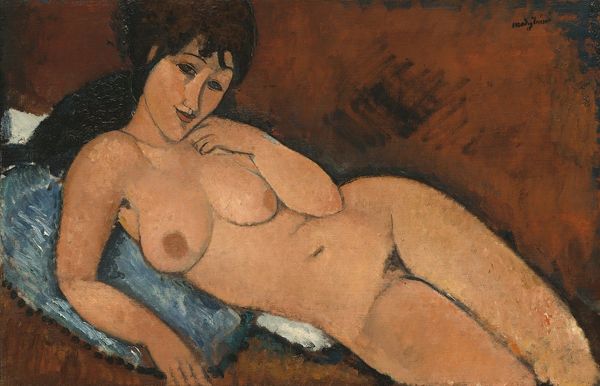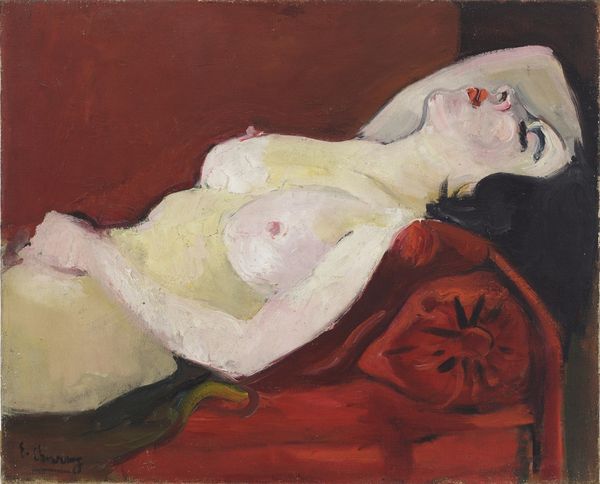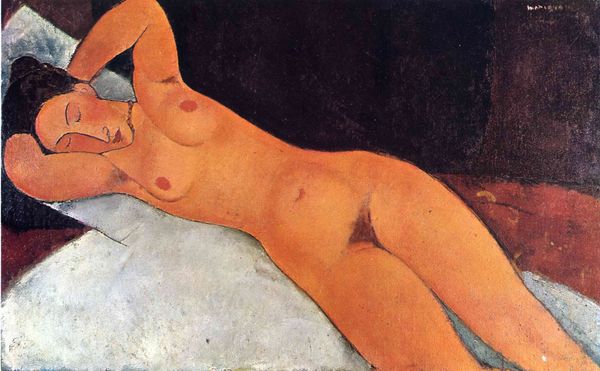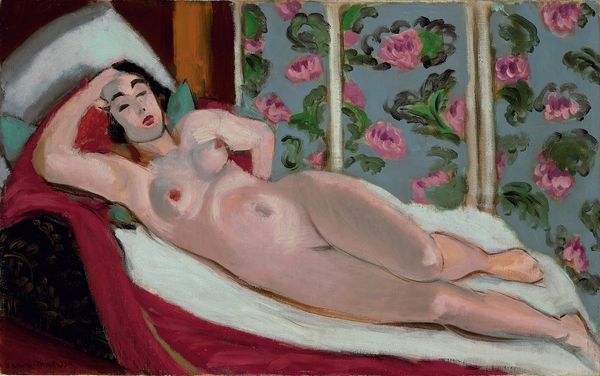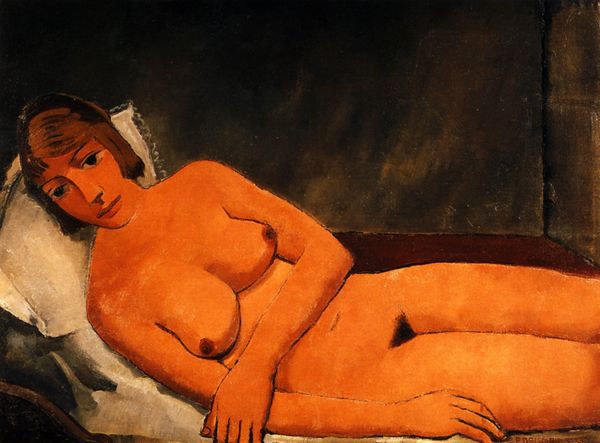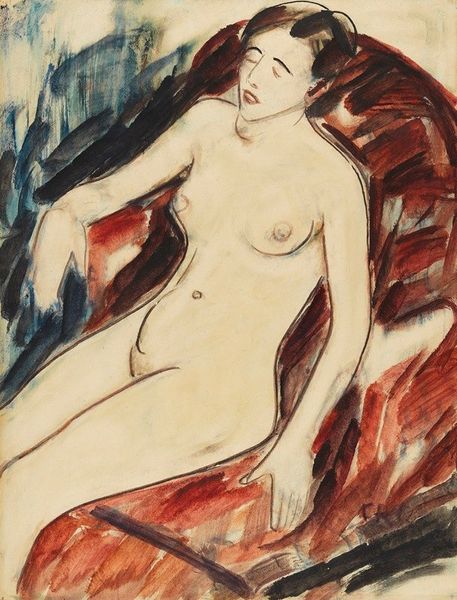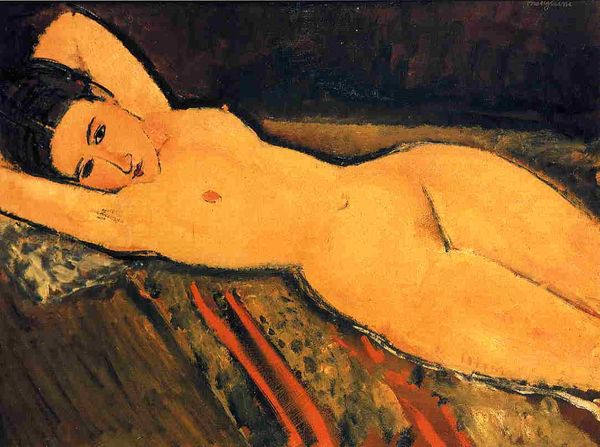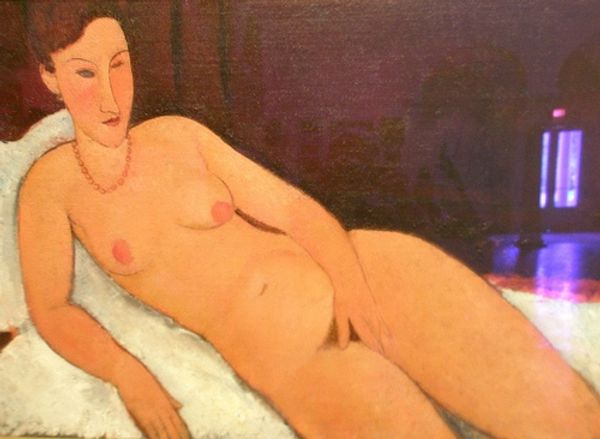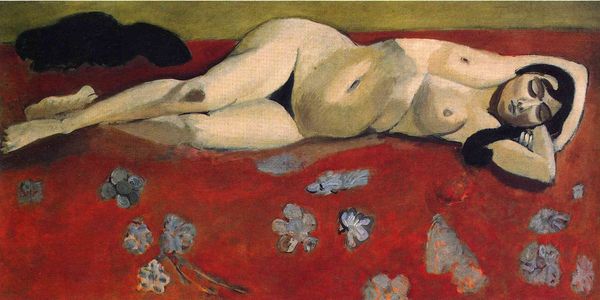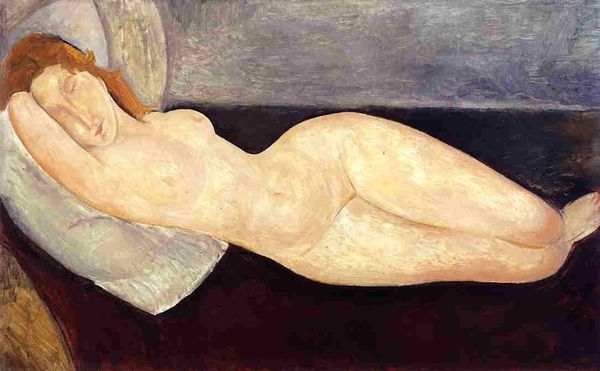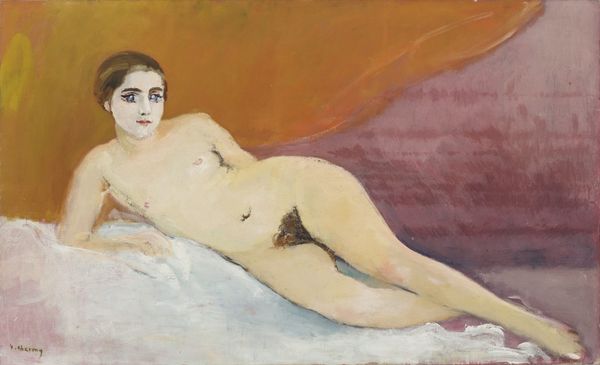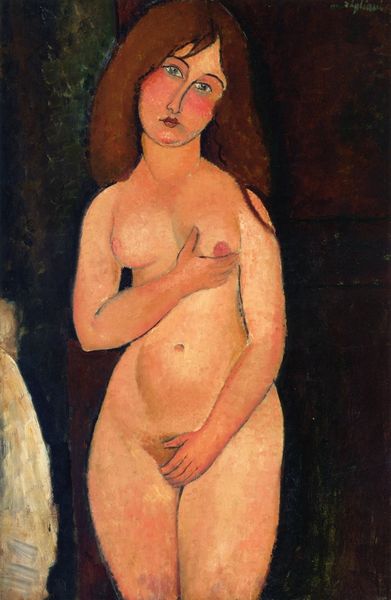
painting, oil-paint
#
portrait
#
art-nouveau
#
painting
#
oil-paint
#
figuration
#
oil painting
#
female-nude
#
italian-renaissance
#
nude
Dimensions: 60.6 x 92.7 cm
Copyright: Public domain
Curator: This is Amedeo Modigliani's "Reclining Nude," created in 1917. The painting, rendered in oil, resides here at the Museum of Modern Art. Editor: My first thought is the flatness. Despite the attempt at representing a three-dimensional body, the materials insist on their own two-dimensional reality. That vibrant red, for instance—it’s luscious paint, more than fabric. Curator: Indeed, there's a tension. The subject itself—the reclining nude—carries a heavy symbolic weight in art history, often associated with notions of beauty, pleasure, even sin. But Modigliani abstracts the figure, doesn't he? Elongated limbs, almond eyes lacking pupils… It almost seems like an echo of Botticelli. Editor: And I'm drawn to consider how Modigliani crafted this "flatness," so to speak. The choice of oil allows for blending, a softening of contours. The pigment itself – could it have been sourced locally, responding to the materials available in Paris at the time? Were the pigments natural or synthetic? It would tell us about its social context. Curator: Considering the symbolism and artistic precedents of the Renaissance is key, but also the painting emerged from a very specific social climate – the bohemia of early 20th-century Paris. This was a melting pot of ideas around art, culture, even human identity. This flattening almost functions to equalize or flatten social distinctions as well. Editor: It makes me wonder about the labor. The application of each brushstroke, the process of building up the surface... someone had to grind those pigments. These paintings have labor and exploitation embedded within their fabric as part of the art world’s wider socio-economic systems, no matter how ethereal they appear at first glance. Curator: You’re bringing out an interesting dimension, forcing us to remember what it means for a painter to have these resources while creating his work. Still, I read a universal symbolism in that absence of the model's direct gaze. It invites introspection; a contemplation on what beauty is. Editor: I guess, seeing the work like this, the oil becomes less about capturing an ideal and more about the means through which it was brought to be made. The process shapes everything here, including the experience of viewing. Curator: Absolutely. Considering process adds greater nuance. I will revisit this painting thinking about material, class and production from now on. Editor: And the symbolism makes me think deeper about art, power, and social status. An interesting conversation!
Comments
No comments
Be the first to comment and join the conversation on the ultimate creative platform.
